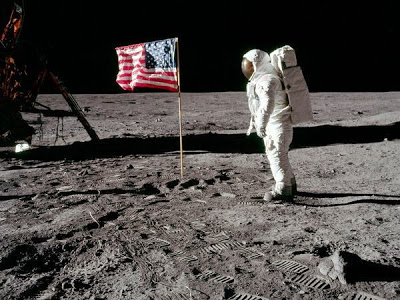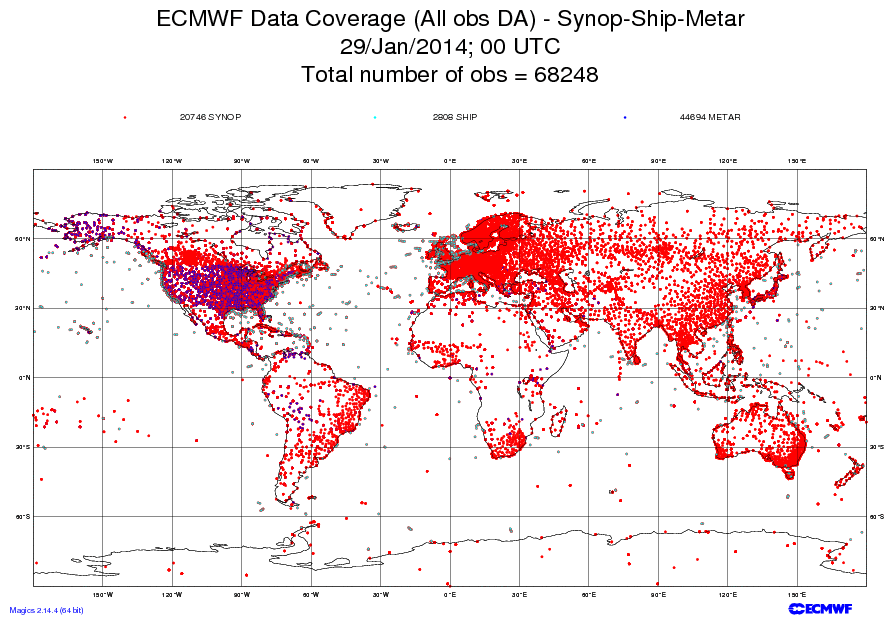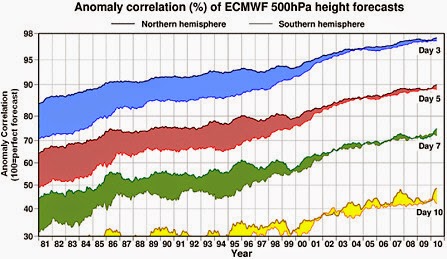
Cliff Mass, meteorology professor at the University of Washington makes a case for the amazing improvements of weather forecasts in recent history.
Is Numerical Weather Prediction One of Mankind’s Greatest Achievements?
Modern weather prediction is perhaps the most cooperative activity of our species. To forecast the weather anywhere on the globe require weather data everywhere on the globe. A disturbance over China today, can be over the U.S. in a few days, and vice versa. Even during the cold war we shared data with China and the Soviet Union. Nearly every nation exchanges its weather data with others, with few exceptions (like North Korea).
Modern weather prediction requires the ability to simulate atmospheric effects on a vast range of scales ranging from the molecular to the planetary. To predict the weather one must deal with the condensation of water vapor on microscopic particles less than a micron (millionth of a meter) in size on one hand to planetary circulations of many thousands of kilometers on the other.
Modern weather prediction uses the world’s most powerful computers and the associated model software includes millions of lines of code. Some of the biggest computers in the world are used for weather/climate simulation. For example, the UK Meteorology Office just purchased a 16 petaflop computer from CRAY (a petaflop is a thousand trillion operations per second).
The number of lives saved and the economic value of weather prediction is beyond measure. Superstorm Sandy hit the NY Metro area, home of tens of millions of people, with hurricane-force winds and major coastal flooding. Roughly 150 lost their lives and many of them did so because they ignored the forecasts. A similar storm hit a far more sparsely populated area of eastern Long Island in 1938 and over a thousand people perished. In 1900, a hurricane hit Galveston Texas and 6000 people died. Weather prediction is now an essential tool for farmers and for those that manage our dams and roads, to mention only a few applications. And if the weather becomes more extreme under global warming, improved weather prediction will play a large role in protecting life and property.
The amount of data collected for operational numerical weather prediction is staggering. Petabytes of weather data are streaming to earth from dozens of weather satellites each day. Hundreds of thousands of surface stations, roughly a thousand radiosondes, thousands of ships and buoys, thousands of aircraft, lightning detection networks, and other sensors are reporting each day, adding up to tens to hundreds terabytes of information daily. All this data is distributed around the world, quality controlled, and used to provide a physically consistent description of the three-dimensional atmosphere.
Modern numerical forecasting went from non-existent in 1950 to highly skillful today. The following chart is my favorite. It shows increasing skill at 3, 5, 7, and 10 days at 500 hPa (about 18,000 ft) at one major forecasting center (the European Center, ECMWF). Major increases in skill at each time projection (up is better). But even more impressive is the fact that southern hemisphere forecast skill (the lower lines for each color band) now equals to the northern (which has much surface and upper air observations). The major reason: weather satellites
So during this end-of-year season it is good to reflect on how far we have come in weather prediction, even though we have the potential to push the science and technology much further. And we should not forget the dedicated folks that developed the models, the scientists/engineers that designed the satellites and observing systems, and the human forecasters that interpret and communicate the model output. A huge and expensive enterprise that is worth the investment. And one that has been been a successful partnership between the government and private sectors.
The media spends so much time highlighting what is wrong with society. But sometime we should think about our great positive achievements, particularly those dependent on the active positive cooperation of mankind. Weather prediction surely is one of them.




